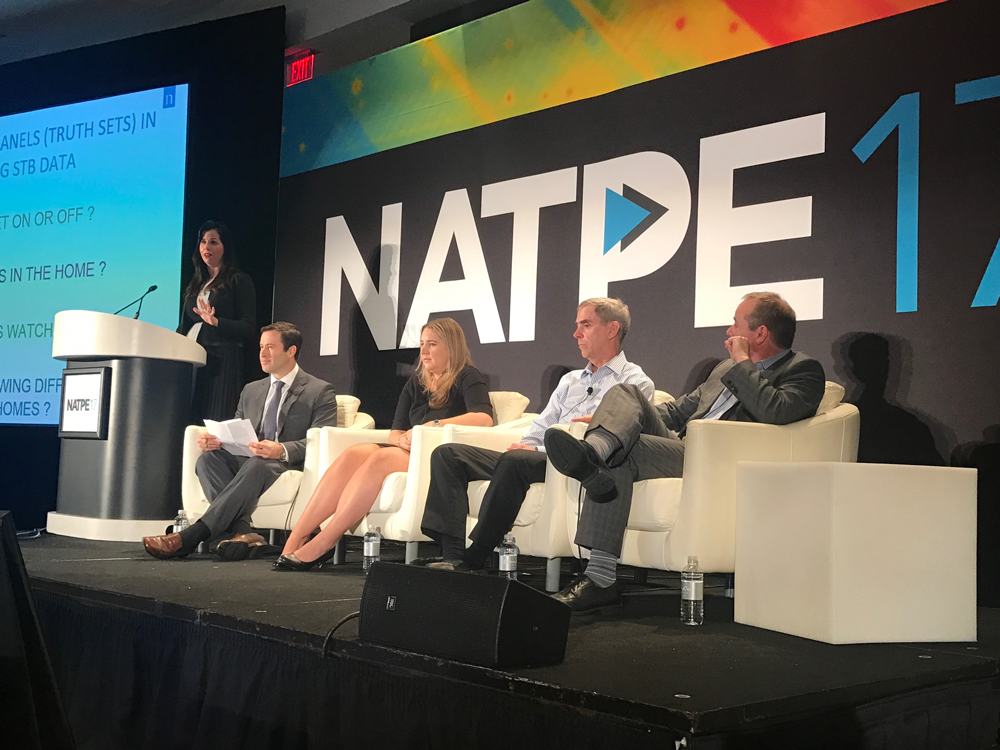
Innovation is key in an ever-changing media landscape, and as a result, it is imperative to have evolving, true third-party measurement. During the 2017 National Association of Television Program Executives (NATPE) conference in Miami Beach, Fla., Kelly Abcarian, senior vice president for Nielsen Product Leadership, shared our strategy to continue advancing local television measurement.
Kelly noted that panels remain the foundation of our measurement and are the key to unlocking the power and advantages of large data sets. When it comes to our panels, the level of research—from who lives in the home to the car that they drive to the type of pet that they own—they offer presents a wealth of information and insights that is crucial for advertisers and sets Nielsen data apart. However, with increased media fragmentation and the endless options to view content, it’s also important to have best-in-class true local market qualitative data.
Each local market is unique, and having access to robust qualitative data that capture the nuances in these communities and how people live, work and shop is critical. To address this challenge, we’re expanding the reach of Nielsen Scarborough, the leading qualitative data service in the country, across all TV markets and integrating other third-party data sets that will only help strengthen our measurement.
But we are not stopping there. Nielsen’s Personal People Meter (PPM) technology is being expanded to capture in-home and out-of-home viewing. The use of the PPM device will bring out-of-home measurement to 44 local markets, capturing all viewing that occurs outside of the home.
These efforts are the base of our mission to provide broadcaster and advertisers with accurate, useful and granular local measurement that captures all local audience viewing.
At NATPE, Kelly’s presentation also helped set the stage for a powerful and engaging panel discussion focused on the current state of local TV and future advancements measurement. Jeff Wender, managing director for Nielsen Local Media business, moderated the panel discussion, which included Stefanie Morales, director of audience Intelligence for MAGNA, Brian Lawlor, vice president of broadcasting for The E.W. Scripps Company, and Doug Lowe, executive vice president of broadcasting for Meredith Corporation.
“We really see the future of local and maybe national measurement as being the combination of the panel and big data, including set-top-box,” said Stefanie. “I think what you guys are doing is probably the best way of measurement for the future for TV.”
The investments that we’re making to local TV measurement, enriching panels with return path data, are the foundation to measure all viewing regardless of device and location. The new capabilities will bring continuous, monthly measurement to all 210 TV markets.
“I think what you guys are doing and what we are here talking about—it’s important,” said Brian. “We are affecting and influencing a lot to people with our content, and we need to know where they are, how they are consuming, how long they are consuming, how engaged they are…At the end of the day, we want to be those brands that really matter, but we’ve got to understand where audiences are, so we can monetize them.”
With the work that we’re doing to advance local measurement, media companies and agencies will have more accurate data, increased ratings fidelity and richer local insights. These efforts will facilitate media planning and buying and will help buyers and sellers identify new consumer segments and begin to move toward impression-based buying.
The adoption of impression-based buying helps alleviate the complexities that exist when buying local television. Doug added, “If we use impressions, everybody is on the same playing [field], and it makes the job easier where you can compare us with other media and make us on par with them. [This] makes buying TV a little bit easier, and the more we can do that, the better.”
With panels at the center, we’re transforming how local television is measured. The integration of smart and clean data from set-top-box combined with other large sources of data like the PPM will bring stability to the ratings. Local market buyer data from Scarborough or other third-party data providers will augment the measurement. Ultimately, these steps will help us capture all viewing done in local markets.
“Three years ago, I was really worried about what audience measurement was going to look like a couple years down the road,” said Brian. “Finally we have our arms around it. We are finally being realistic that we have to capture all of that [viewing], and all of that is valuable…All these things are the right step forward, they have given me hope.”
